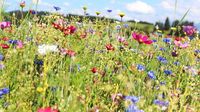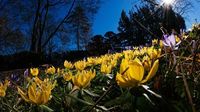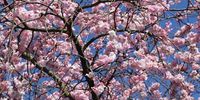Spring has officially arrived in Germany, with the astronomical spring equinox marking its inception at 10:01 AM CET on March 20, 2025. While this is a significant event in the calendar, the natural world has shown signs of spring for some time now, indicating that nature operates on its own timeline regardless of human-defined dates.
The phenomenon known as the equinox occurs twice a year, when day and night are of equal length. Astronomically, this marks the onset of spring, though meteorologically, the season began on March 1. The difference between these two definitions highlights the nuanced distinction between how humans conceptualize seasons and how the natural world responds to changes in weather and temperature.
The Earth’s rotational axis, tilted at an angle of 23.45 degrees, causes the seasons. As the planet orbits the sun, the north and south hemispheres tilt alternately towards the sun, resulting in changes in daylight duration. This axis tilt is responsible for the varying lengths of daylight and can result in significant differences especially for those living at higher latitudes.
This year, as spring begins, flowers such as snowdrops and crocuses are already in full bloom across various regions, indicating that the phänologische—or phenological—spring has also commenced. Phenology studies the timing of life cycle events in plants and animals, providing insights into how climate change is influencing these traditional markers of spring.
As observed by Anke Kondla, a phenological observer from Mainz-Bingen, “The hazel is already blossoming early in its floral attire. That makes it particularly noticeable, and it wants to attract bees. One can say: when the hazel blooms, the pre-spring has begun.” The blooming of the hazel shrub signifies the commencement of the pre-spring, which impacts the timing of other spring events.
The advent of climate change has pushed the phänologische spring earlier each year. According to long-term observations, the hazel was noted to bloom around March 3 from 1961 to 1990, but this has shifted to February 14. Such changes highlight the challenges posed by global warming, indicating a shift in ecological rhythms and the potential consequences for ecosystems and agricultural practices.
Complementing this, the meteorological spring is used for statistical purposes and begins each year on March 1. This approach allows climatologists to analyze weather patterns over fixed periods, offering a standardized frame of reference that contrasts sharply with the more fluid nature of the phänologische perspective.
Moreover, the agrarfmrotechnological spring—marked when the cumulative temperature of grassland reaches 200 degrees Celsius—helps determine the onset of agricultural activities. This threshold allows farmers to assess when it is appropriate for the fields to start their seasonal work as the soil becomes warm enough for sustainable growth.
As spring progresses, readers are encouraged to document and share their local spring experiences, as called for in publications like Ruhr Nachrichten, which invite people to send in photos capturing the seasonal beauty. This participatory aspect is crucial as it creates a community around the seasonal transitions and shared appreciation of nature’s cycles.
Moreover, the planned transition to daylight saving time on March 30, when clocks will spring forward an hour, adds to the springtime experience for many. Although there are discussions around the utility of changing clocks, this biannual ritual remains a hallmark of seasonal change in many regions.
Throughout Germany, various signs of spring can already be seen, from the blossoming of the cherry trees in neighborhoods to the vibrant displays of forsythia, with its bright yellow hues brightening up gardens and public spaces alike. These natural occurrences resonate with the human experience, as many people emerge from the hibernation of winter, filling parks and gardens with life.
As the season unfolds, careful observation of flowering plants and trees—like the apple blossoms, which signal the full arrival of spring—becomes vital. The SWR has provided documentation of apple blossom data since 2006, utilizing over 48,000 data sets to track changes in blooming times and assess how these are influenced by climatic conditions.
In summary, while the calendar officially sets the start of spring, the real-life manifestations of the season are dictated by the natural world, which is increasingly influenced by climate change. As such, observation of seasonal changes becomes more crucial than ever, providing vital data for understanding our environment and how best to adapt to ongoing changes.








